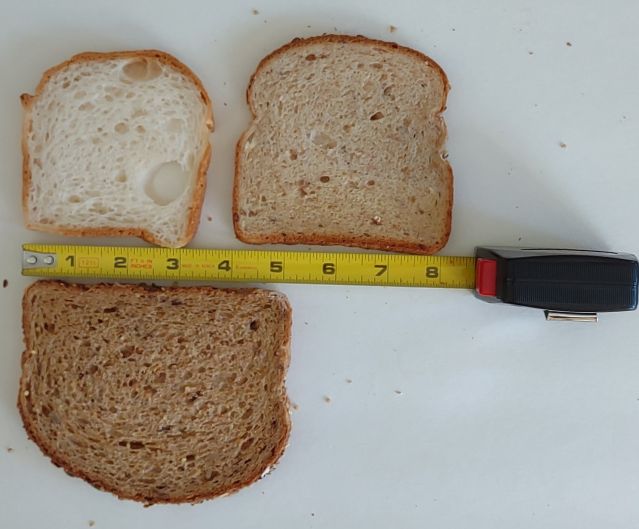Consumer Behavior
Shrinkflation, Downsizing, and the Destruction of Trust
Personal Perspective: Are we living in the new land of Gulliver's Lilliput?
Posted September 4, 2024 Reviewed by Monica Vilhauer
Most of us are familiar with Jonathan Swift’s Gulliver’s Travels, an eighteenth century satirical novel in which the main character visits a series of strange countries, including Lilliput, where he is a giant among the diminutive-sized Lilliputians. In this country, Gulliver must attempt to adjust to a world where everything is much too small to accommodate his physical size and needs. Although that world might seem like a flight of fantasy that Swift created for satirical effect, the downsized world we inhabit in America today often makes it seem very real. If Swift were alive, he would probably think he had stumbled into the new Lilliput.
Corporate downsizing and the resultant loss of jobs have received considerable publicity. What is less obvious is the downsizing of services and products, while selling them at the same prices or more. This first became apparent to me during a flight back to the Midwest several years ago. I purchased a “Comfort” seat, which guaranteed a few more inches of body space. Even in my comfort seat, however, the passenger next to me struggled to keep his arm on his side of the armrest. The standard-sized seats I walked past on my way to the bathroom were even more diminutive. Passengers were squished into seats so undersized that their shoulders touched and often overlapped.
When I asked the flight attendant for a bag of peanuts, I was introduced to another startling feature of the new Lilliput. The bag was two to three inches square with only enough space for a small handful of peanuts. When I opened the bag, I realized I had been overly generous in my expectations. There was a small sprinkling of peanuts at the bottom of the undersized bag. I did not count them, but it would have been a relatively easy task considering how few there were. I could do it on my fingers. However, I was restricted by the fact that my neighbor had fallen asleep and his arm was dangling over my armrest.
Later, while I drove a rental car around the upper Midwest, I encountered more examples of the new Lilliput in almost every form of packaging in convenience stores and supermarkets. Candy bars had shrunken to two-thirds of their former size, although the packaging was the same size and extended well over both ends. Puffy bags of chips or crackers were mostly air that filled half the package.
When I returned to San Diego with my newfound awareness, I decided to continue my search for Gulliver’s Lilliput. I soon realized I lived in a world of commercial products that had shrunken considerably in size until some were almost rendered unusable.
Powerful economic forces had somehow managed to create Swift’s smaller-sized, dysfunctional Lilliput right in my own home. The dental floss I used would break three or four times during each flossing. The floss was significantly thinner and comprised of several seemingly weak, fragile filaments which could easily be separated and broken. Was this planned obsolescence to sell more dental floss? Probably. But it was also floss for a diminutive Lilliputian, not an average-sized human being with average-sized teeth.
I soon learned the time-honored “pound of coffee” had been reduced to “12 ounces of coffee.” That was not only a reduction in weight. It was a reduction in stature. “12 ounces of coffee” does not convey the same level of respect and trust as a “pound of coffee.”
I noticed that a loaf of bread from our supermarket was often at least one-third smaller than the loaves I remembered from my youth. Individual slices were also greatly reduced in size. If that wasn’t enough, large holes in the bread further reduced the nutritional value of each slice. When toasted, those same slices shrunk to the size of a cracker.
I eventually wrote an op-ed on this new world of Lilliput and sent it to several newspapers, but there were no takers. They were apparently not convinced that Gulliver’s world was being reconstituted right in front of our eyes—and we were oblivious to its consequences. Today, it is obvious to most people that we have a problem with declining trust between consumers and those who control our economy. Shrinkflation is now the norm, not the exception.
This raises many questions. Does the rampant destruction of trust between average people and those who create the products we consume have adversarial consequences in other areas of our lives? When people are unable to trust the very products we purchase, does that contribute to an angry and easily divided society?
So what can modern-day Gullivers do to survive in our Lilliputian world? Unless we can convince politicians to enforce better quality control standards on the services and products we purchase, I am afraid we will have to learn, as Gulliver did, to somehow adjust to a world that is out of proportion to our size.
I have a few simple tests and recommendations I have devised to help me survive in the new land of Lilliput:
Always carry a tape measure whenever you shop. The display on any food that comes in a box should be measured. Whatever the length and width of the display on the front of the box, deduct a minimum of 30 percent for its actual size.
Any food that comes in a bag should be tested to determine how much of the actual content is air. If the bag is squishy—and most of them are—deduct 30-40 percent of the actual food inside that can be eaten. The rest is overpriced air. (You can also give up on cookies, which usually come in squishy bags, and thus lower your A1C—so the news is not all bad.)
Any fast food restaurant that displays the size of its hamburgers on the display windows usually shows the big, juicy hamburger patty spilling out of the bun. Trust me, I purchased several hamburgers at local fast-food restaurants, and there isn’t a single one where you can see the actual patty before you lift the top bun. Some patties seem to be fighting with the sliced pickle for dominance inside the bun.
When you shop for clothes, go one size up for everything. X-large is now large, large is now medium, and small is for the people of Lilliput. It doesn’t fit most human beings. It doesn’t help to go looking for a store employee to explain why your old clothes size no longer fit. Those employees have also shrunk in number—the victims of downsizing, another form of shrinkflation.
Successful businessmen like Warren Buffet still reassure us that “Price is what you pay. Value is what you get.” I would argue that this is no longer the case. Today, value is often developed by hype and artificial demand created through the media and internet, often to the point that we are numb to what constitutes true value.
Maybe we have reached the stage in the evolutionary process where our bodies will have to get smaller to adjust to a world where everything is downsized. Then we can sit on top of one another in airplane seats, share a single peanut in a one-inch package, purchase one potato chip or cracker at a time, carry three-inch loaves of bread in our shirt pockets, and engage in all the other necessary adjustments in this new land of Lilliput.
Where is Jonathan Swift when we need him?

References
Jonathan Swift, Gulliver's Travels (1726)




